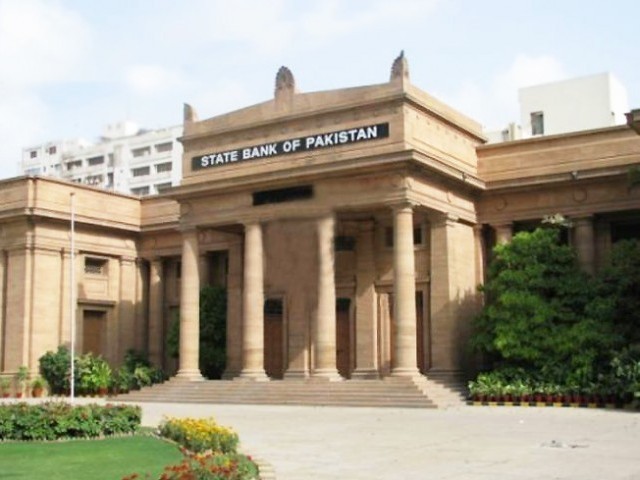
It has been officially confirmed by the State Bank of Pakistan (SBP) that Pakistan’s economy did not grow 3.3% in FY19 as initially claimed by the government.
It grew just 1.9% before recording a negative growth of 0.4% in FY20 for the first time in 68 years. The central bank has revised downwards components of FY19 gross domestic product (GDP) growth in its recently released third quarterly report for FY20.
Fiscal year 2018-19 was the first year of the Pakistan Tehreek-e-Insaf (PTI) government’s performance and PTI officials claim that the reason for the low GDP growth was an overheated economy.
They said that the growth achieved during the Pakistan Muslim League-Nawaz’s (PML-N) tenure, from FY14 to FY18, was through unsustainable means on the back of reckless foreign and domestic borrowing. They said that they had to fix the open fault lines of the economy during FY19, which eventually led to slower growth in the economy.
This narrative, which remained in vogue throughout FY19 and well into the first half of FY20, was built to justify PTI’s below par performance in its first year in office. And whenever presented to the nation, it came along with tall claims of reviving the economy in PTI’s second year ie FY20.
Now, a 0.4% decline in GDP in FY20 has exposed those tall claims but government officials have placed the entire blame on the Covid-19 outbreak in Pakistan.
Covid-19 hit the country towards the end of eighth months in FY20 - on February 26 to be exact. However, the economy had not been showing any promising signs of growth even before the crisis hit the country.
The agriculture sector was not picking up while industrial output and services sector were also declining. But the 3.3% GDP growth for FY19 and targeted 4% growth for FY20 obscured the slow progress.
Independent economists have consistently pointed out that the growth number was an exaggeration - meant only to minimise PTI’s embarrassment that had inherited a revised GDP growth rate of 5.5% in FY18.
Pakistan’s challenges and opportunities
Given this track record, one has reason to fear that after a few quarters, FY20’s GDP decline of 0.4% may turn out to be much deeper - up to 1.5% if the International Monetary Fund (IMF) is to be believed.
Employment challenge
It does not require an economic wizard to imagine the economic miseries produced by a steep fall in the GDP growth rate - from 5.5% in FY18 to just 1.9% in FY19.
As a rule of thumb, a one-percentage-point decline in GDP throws out a million people out of jobs in Pakistan. This rule of thumb is often cited by independent economists of high stature, the most vocal of them being Dr Hafiz Pasha and Dr Kaiser Bengali.
If we accept this rule of thumb, then 3.6 million Pakistanis had already lost jobs in FY19. That number must have supposedly grown to at least 8.6 million by the end of FY20 in June because no less than three million people in Pakistan qualify to enter the job market every year.
If we take into account the joblessness coming in the wake of 0.4% decline in GDP in FY20 and joblessness created by the Covid-19 pandemic - for both there are no credible estimates available - it would be safe to say that the number of unemployed persons in the country have already gone up to nine million. Dr Hafiz Pasha offers an even higher estimate of 10 million.
Global recession is far from over. The United States and the United Kingdom have recorded 33% and 24.5% year-on-year decline in their GDP during April-June and it is still not clear whether the economic recovery in those two economies or elsewhere in the world will be V-shaped or W-shaped.
In case the economic recovery is W-shaped, the world at large is going to be in deep trouble.
Fundamentally weaker economies like Pakistan would be in extremely difficult situation. Chinese economy grew 3.2% during April-June after falling 4.8% in the January-March period but China alone cannot reverse global recessionary trends.
Future growth prospects of China are seriously challenged by its worsening diplomatic and trade ties with the US, the largest economy, and India, the second most populous country in the world. Besides, Pakistan is, in no way, ideally positioned to take advantage of Chinese growth for boosting its economic growth and regional exports.
What has more complicated the economic development challenges is that Islamabad has understandably started an aggressive campaign to put diplomatic pressure on India.
Trade ties with India remain suspended and chances of a military confrontation between the two nuclear-armed nations cannot be entirely ruled out notwithstanding Pakistan’s desire to resolve the Kashmir issue through more aggressive and more inclusive diplomacy.
Promising signs
However, recent gains in the external sector (high growth in remittances and foreign direct investment, moderate growth in exports, increase in foreign exchange reserves, squeezing of current account deficit and relative stability in exchange rate) and chances of further inflow of foreign investment after upgrading of Pakistan’s economic outlook by Moody’s and Fitch are some of the encouraging developments.
Besides, industrial production after having experienced a plunge in the last fiscal year is growing, private sector is getting more credit from banks, the State Bank of Pakistan is expanding the scope of concessionary finance scheme for the export sector and after the easing of lockdown restrictions domestic economic activity is showing a fast recovery.
There is some light at the end of the tunnel. If the positives remain, these economic gains can help the government achieve the 2% GDP growth target in the current fiscal year.
The writer is a mechanical engineer and is doing masters
Published in The Express Tribune, August 24th, 2020.
Like Business on Facebook, follow @TribuneBiz on Twitter to stay informed and join in the conversation.


















COMMENTS
Comments are moderated and generally will be posted if they are on-topic and not abusive.
For more information, please see our Comments FAQ